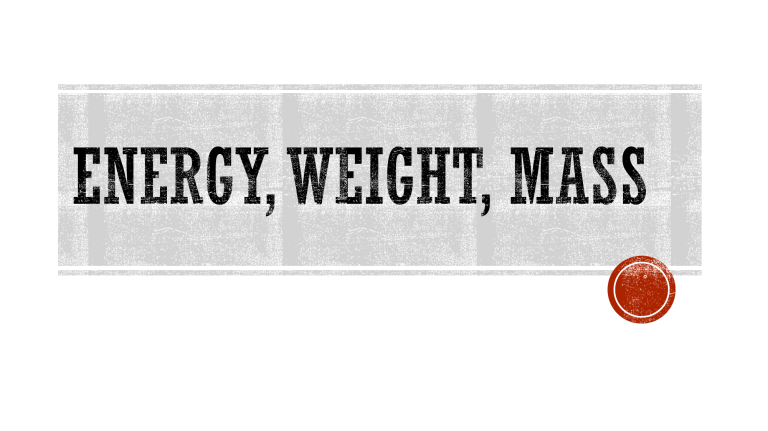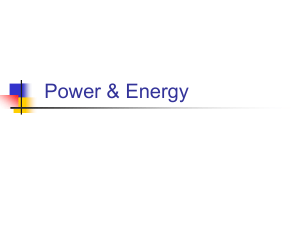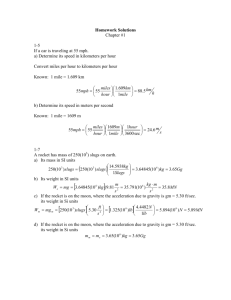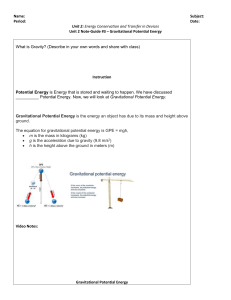
Mass is the amount of matter in a substance. Weight, a force, is the effect of gravity acting on it. MASS / WEIGHT UNITS Imperial: pounds (lb) Metric: Grams (g, kg) English/British: Slugs or pound mass (lbm) The newton (symbol: N) is the International System of Units (SI) measurement of a unit of force. One newton is the force needed to accelerate (move) one kilogram of mass at the rate of one meter per second squared. 𝑁𝑒𝑤𝑡𝑜𝑛𝑠 = 𝑘𝑔𝑟𝑎𝑚𝑠∗𝑚𝑒𝑡𝑒𝑟𝑠 𝑆𝑒𝑐𝑜𝑛𝑑𝑠 2 Or 𝑁 = 𝑘𝑔 ∗ 𝑚 𝑆2 ENERGY IS The capacity to do work When energy is transferred, things happen LAW OF CONSERVATION OF ENERGY Energy cannot be created or destroyed, only transferred. Its form can be changed Often it is converted to heat. The energy an object has due its vertical position (usually through gravity) PE = mgh m = object’s mass (lb, kg, slugs) g = gravitational constant 𝑚 2) 𝑠 𝑓𝑡 2) 𝑠 (9.8 or (32 h = vertical height of object The energy a moving object possesses by virtue of its motion. KE = ½ mv2 m = mass (lb, kg, slugs) v = velocity ( 𝑚 𝑓𝑡 , 𝑠 𝑠 ) MECHANICAL ENERGY (ME) Mechanical Energy is the total of potential energies (height/gravitational, other) and kinetic energy ME = PEg + PEo + KE MEin = MEout Power is the amount of energy transferred or converted per unit time. During the time force acts on an object, the object moves or changes in some respect. In mathematical terms: The force times the distance the object moves is work. Work = force x distance Or w=fxd therefore WORK: Start and stop motion Change directions Change shapes Apogee KEtop = 0 PEtop = mgh w = PEtop = KEground Ground KEground = ½ mv PEground = 0 If you want to get a rocket to a given height (altitude) you must get it to a certain velocity/speed. LAW OF CONSERVATION OF ENERGY | FORMS OF ENERGY




